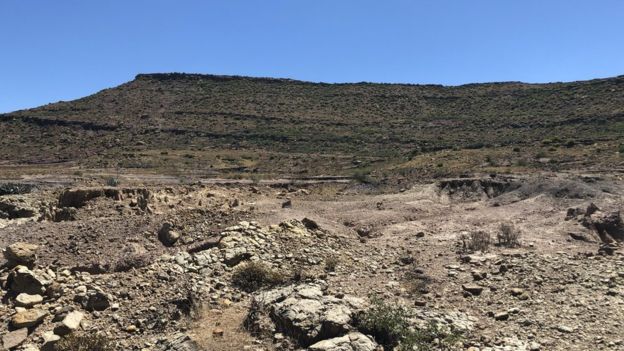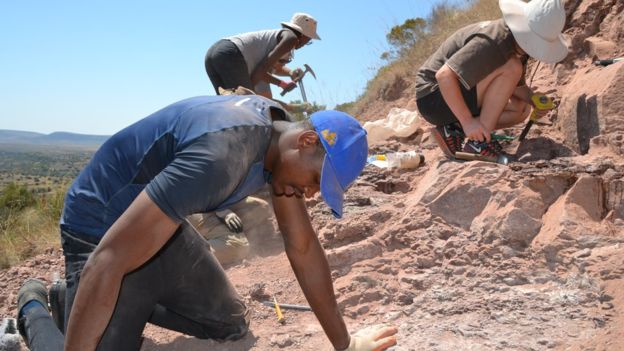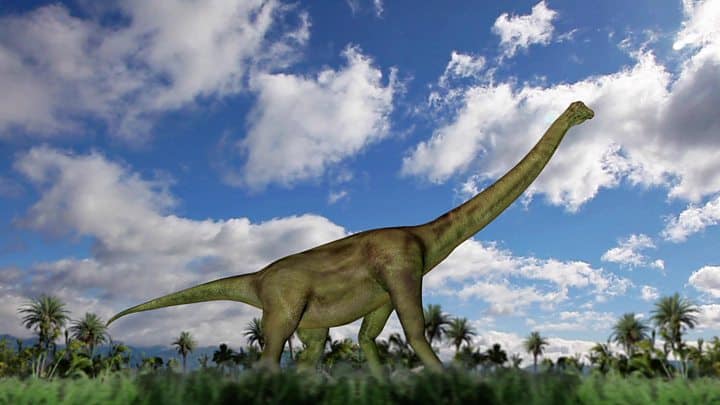This is the story of how a shepherd, a geography teacher and a pensioner helped unearth one of South Africa’s biggest discoveries of dinosaur bones.
The shepherd, Dumangwe Thyobeka, stumbled across the dinosaur graveyard, with fossils up to 200 million years old, on a routine visit to his family’s burial place in Qhemega, Eastern Cape Province.
“My great-grandparents are buried on this land and one of my responsibilities is to look after their graves, clean them,” the 54-year-old, who has become something of a local hero, told me.
“One day while doing that I came across a large bone, I had never seen anything like that before and knew I had to show the bones to someone.”

That someone was pensioner James Rhalane, a known dinosaur enthusiast in the village.
‘Books will be written about our village’
“Growing up we were told dinosaurs were a myth, I thought they were only tales our grandparents would tell around the fire at story time,” he said.
“It wasn’t until reading some books that I started to believe they may be real. I’ve been looking into the existence of dinosaurs since 1982.
“You can imagine my excitement at being part of this and discovering them in my own backyard. I am so proud.
“Books will be written about our small village, the world will come to know of us through this discovery.
“That’ll be good for development here,” he added, barely able to contain his joy.

The fossils were found in the barren landscape of this part of Eastern Cape Province
The third member of the trio of unassuming fossil hunters is Themba Jikajika, a geography teacher at a nearby primary school.
“They decided to bring the bones to me and when I was looking at them, I told them I suspect them to be fossils, that is according to how they appeared,” he said.
“As a geography teacher having taught about fossils in my class, when I saw the bones I immediately thought these are the remains of animals that died a long time ago but I couldn’t be sure which is why we involved the experts from Wits University and they confirmed our suspicions.”
‘Dinosaurs were everywhere’
A team of palaeontologists from various universities including Johannesburg’s University of the Witwatersrand [Wits], the Universities of Oxford and Birmingham in the UK and Switzerland’s University of Zurich spent weeks here earlier this year, excavating some of the fossils.

A team of palaeontologists will be returning to Qhemega to continue with the excavation
Leading that mission was Professor Jonah Choinière who works at the Evolutionary Studies Institute at Wits.
“The first time we went to have to look at this, it was just mind blowing. There were dinosaurs everywhere,” he said.
“We’ve just completed the first field season and we got to 10% or 5%.
“We will go back next year and we’re hoping to hire a truck to move the fossils to Johannesburg, in the meantime we were able to pull out some leg bones.”
Twelve plant-eating species
The site, in a barren landscape stripped clean of vegetation, is thought to stretch over a 20km radius (12 miles).

It is believed to be filled with hundreds of fossils from at least 12 different species of the plant-eating sauropodomorph dinosaurs.

